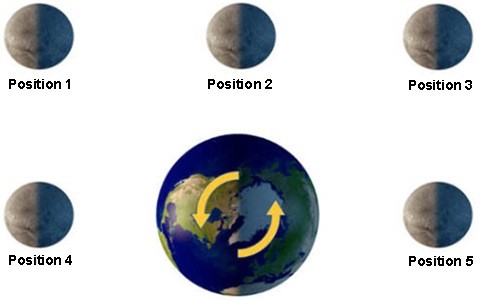Choose the Moon position that would cause low tide in North America (North America is on the sunlit side of the globe).
A. Position 1
B. Position 2
C. Position 3
D. Position 4
E. Position 5
Answer: B
You might also like to view...
An unusual feature of the Russian population compared to other regions is that
A. birth rates are very high B. birth rates are rising C. death rates are rising after having fallen D. population is rising rapidly
All the following statements about the concept of diffusion and about cultural phenomena are true EXCEPT:
A) Diffusion explains the distribution of all cultural phenomena. B) Sometimes the same phenomenon does occur spontaneously and independently at two or more places. C) We should never assume that any aspect of culture has diffused unless we can demonstrate the path of diffusion from one culture to another. D) Independent invention of different kinds of innovations, such as the use of the zero as the basis of a numerical place system, has occurred in human history. E) Diffusionist arguments have been used to minimize or underestimate the ingenuity of various peoples.
Which of the following best describes the fumaroles that exist in Yellowstone National Park?
A) Hot springs so hot that they create steam and vent sulfuric acid B) Lava deposits that are constantly heated from superheated gases in the ground below. C) Smoke from lava pits below ground that vent to the surface through cracks. D) Lakes that are heated by underground pyroclastic flows.
Which of the following would lead to a GPI value closer to the GDP value for any given year?
a. Maintaining current fossil-fuel-based energy sources. b. Increasing natural resource use to make more material goods. c. Adopting manufacturing processes with lower energy and resource use. d. Developing new economic policies that allow increased pollution discharge.